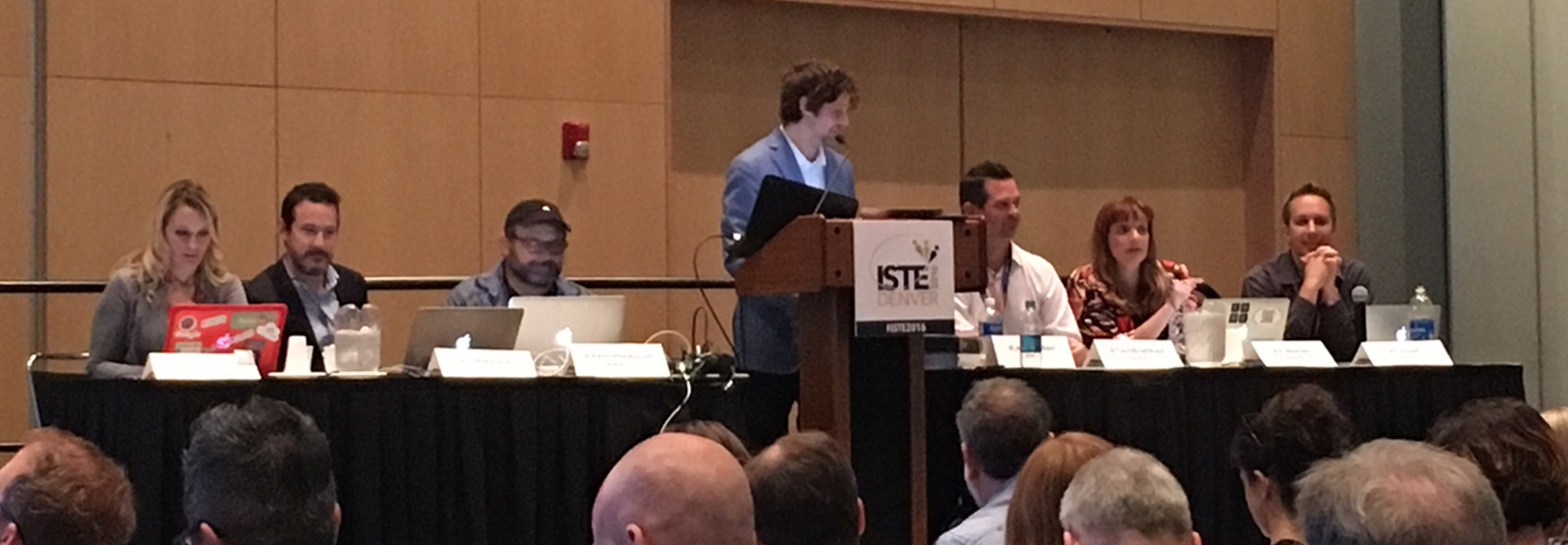ISTE 2016: CTOs Must Accept Help to Succeed in Their Changing Role
Collaboration and delegation emerged as the major themes of a Monday afternoon ISTE session devoted to discussing the chief technology officer’s changing role within education.
A panel of IT leaders, curriculum specialists and educators — which included Alice Keeler, one of EdTech’s 2016 Must-Read K–12 IT bloggers — took questions from the audience via a live Twitter conversation and through Google Slides Q&A.
While the discussion covered everything from blended learning to open education resources (OER) to makerspaces and other emerging technology trends, one area of questioning seemed to dominate the session: How can CTOs take on the role of instructional leader when their skills are often niche and their time is so limited?
“It’s very difficult, given the complexities of being a CTO, to be a master of everything,” said Susan Bearden, the director of information technology at Holy Trinity Episcopal Academy in Melbourne, Fla. “It is your duty to understand the core business and how your role supports the core business. And in education, the core business is education.”
She recommends that CTOs find mentors in their districts who can bring them up to speed on the areas where their skills are lacking. She also suggests hiring strategically, bringing on IT professionals who have opposite yet complementary strengths.
As for how CTOs can manage an endless list of tasks on a limited schedule, Teacher Tech blogger Keeler laid out a solution that may prove to be easier said than done.
“You’ve got to let things go,” she said. “Focus on what’s really important for what you’re trying to do. When you’re looking at it from an IT perspective, you have this big basket of things to do — what’s really going to make a difference?”
ESSDACK consultant Kevin Honeycutt got even more specific: “Stop doing Level 1, Level 2 support. Outsource that stuff.”
Bearden said this act of sloughing old duties and embracing the district’s instructional mission requires the right attitude.
“I think you have to keep an open mind and be flexible because the role of IT has changed tremendously, and we need to be cognizant of that,” she said.
Read through the tweets from panelists and audience members below, or scroll through the full Twitter discussion by following the hashtag #ISTETC. You can also check out even more ISTE 2016 coverage by heading to EdTech’s event page.
Is your school global, or snow-global? -@kevinhoneycutt #istetc #ISTE2016
— Susan M. Bearden (@s_bearden) June 27, 2016
"Ts need support from admin to know its ok to fail when trying new things in the classroom" @alicekeeler #istetc #ISTE2016
— Nicole Parsons (@ScienceParsons) June 27, 2016
"The tools will change, but the PEOPLE in education are the ones who will make the difference." -@Techbradwaid #ISTE2016 #istetc
— Ann Brucker (@AnnBruckerTIS) June 27, 2016
To start with OER start small. @kevinhoneycutt #iste2016 #istetc pic.twitter.com/8joar4dQGW
— Shelly Stanton (@StantonShelly) June 27, 2016
"Too many people define curriculum by their text." -@chlupa #istetc #ISTE2016
— Susan M. Bearden (@s_bearden) June 27, 2016
My new job is flipping rocks, looking for great ed tech practices and shining a light on them. - @chlupa #istetc
— Tanya Roscorla (@reportertanya) June 27, 2016
There is no "you and I" anymore; it’s "we" when it comes to academic and IT leaders - @chlupa #istetc
— Tanya Roscorla (@reportertanya) June 27, 2016









